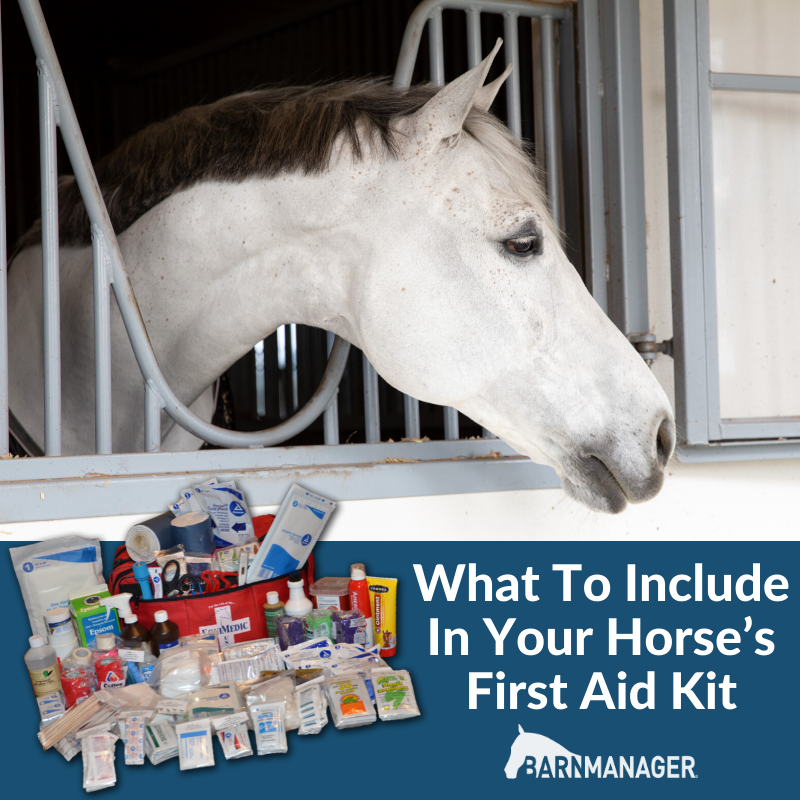
What To Include In Your Horse’s First Aid Kit
If you’ve owned horses for any length of time, you’re likely well aware that accidents and injuries can happen all too often, so it’s important to be prepared!

If you own or operate your own barn, that includes having a thoroughly well-stocked equine first aid kit on hand. If you board your horse, it likely means having many of those same first-aid items in your tack trunk and ensuring that the barn has the others on hand. But what are those first-aid items and what should be in your first-aid kit?
– Thermometer – for taking your horse’s rectal temperature. (It’s important to also know what a horses’ regular temperature should be. Hint: It’s 99 – 101 degrees Fahrenheit.) It can also be helpful to have a small jar of Vaseline within your first aid kit to aid in inserting the thermometer.
– Stethoscope – for checking your horse’s heart rate and gut sounds.
– Scissors – It’s wise to have blunt-end bandage cutting scissors as well as sharper scissors.
– Tweezers – for pulling out splinters or ticks.
– Epsom Salts – for soaking abscesses.
– Bute and Banamine -Phenylbutazone and Flunixin Meglumine, better known as Bute and Banamine, are both non-steroidal anti-inflammatory pain relievers that you should have on hand. Bute acts much like aspirin does for humans and is common for pain relief and fevers. Banamine is more aggressive and is often used in treating colic pain.
– Twitch – In the case of emergency, there are a number of things that your horse may not want to willing participate in, so it’s a good idea to have a twitch on hand.
– A Variety of Leg Wraps, Bandages, and Guaze – including polo bandages, vet wrap, standing bandages, gauze bandages, roll cotton, leg wraps, and non-stick gauze.
– Diapers – diapers may not be the first thing that come to mind for a first aid kit, but they’re great for covering a bandaged foot and also provide extra padding for large wounds.
– Duct Tape – you’ll need this to secure bandages or the aforementioned diapers.
– Latex Surgical Gloves – wear these to help prevent wound contamination.
– Disinfectants and Wound-Flushing Liquids – including rubbing alcohol, saline, gentle iodine such as Betadine, pre-moistened alcohol swabs, and hydrogen peroxide.
– Wound Powder or Spray-On Treatment – when a wound needs to be left open to heal a powder or spray can encourage healing, keep flies off the injury site, and dry up the wound. (Note that after cleaning up a wound, it’s wise to seek veterinary advice before applying a wound powder or spray to ensure that the injury doesn’t need any further care or treatment.)
– Flashlight – with working batteries!